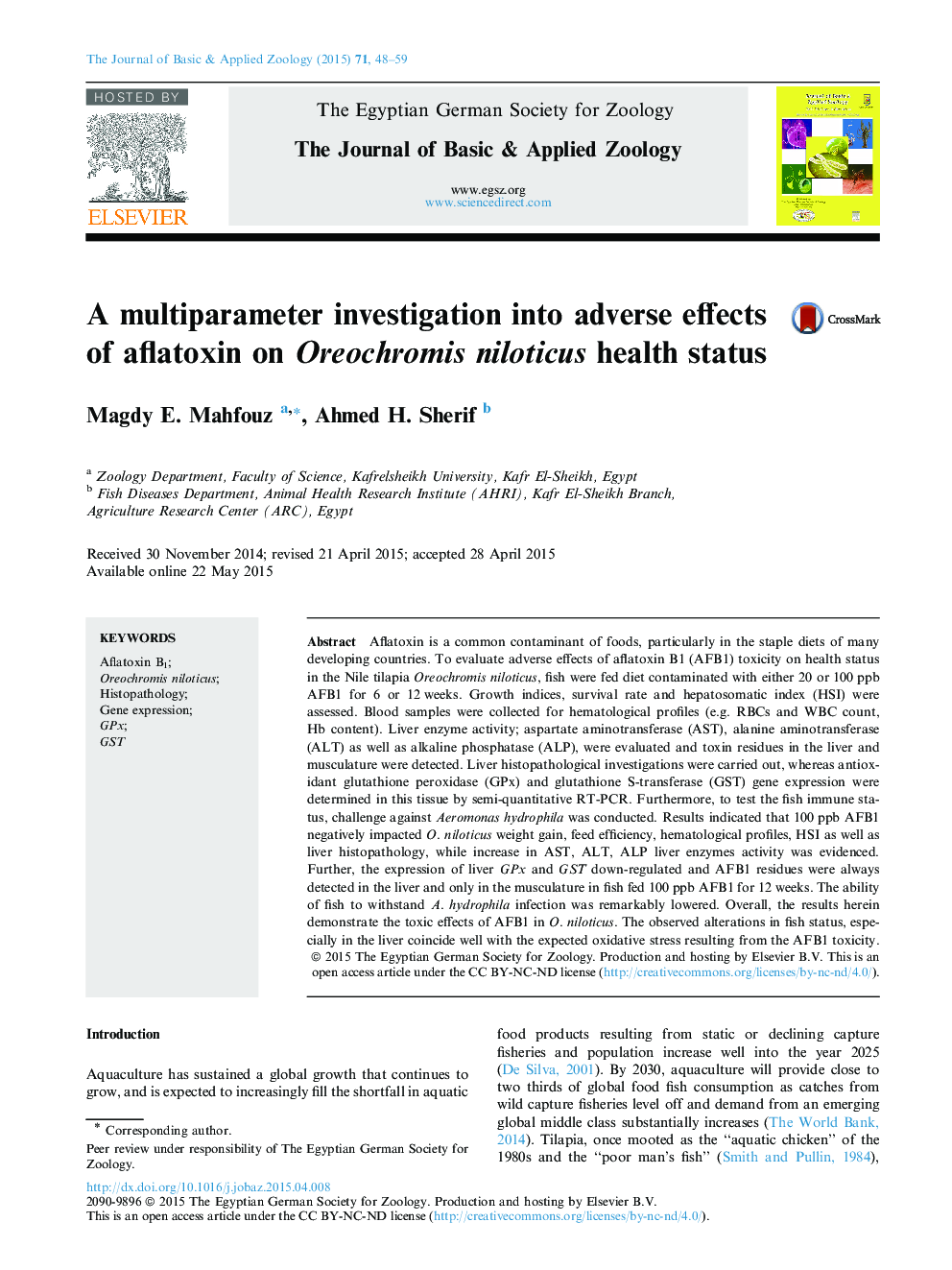| Article ID | Journal | Published Year | Pages | File Type |
|---|---|---|---|---|
| 4493438 | The Journal of Basic & Applied Zoology | 2015 | 12 Pages |
Aflatoxin is a common contaminant of foods, particularly in the staple diets of many developing countries. To evaluate adverse effects of aflatoxin B1 (AFB1) toxicity on health status in the Nile tilapia Oreochromis niloticus, fish were fed diet contaminated with either 20 or 100 ppb AFB1 for 6 or 12 weeks. Growth indices, survival rate and hepatosomatic index (HSI) were assessed. Blood samples were collected for hematological profiles (e.g. RBCs and WBC count, Hb content). Liver enzyme activity; aspartate aminotransferase (AST), alanine aminotransferase (ALT) as well as alkaline phosphatase (ALP), were evaluated and toxin residues in the liver and musculature were detected. Liver histopathological investigations were carried out, whereas antioxidant glutathione peroxidase (GPx) and glutathione S-transferase (GST) gene expression were determined in this tissue by semi-quantitative RT-PCR. Furthermore, to test the fish immune status, challenge against Aeromonas hydrophila was conducted. Results indicated that 100 ppb AFB1 negatively impacted O. niloticus weight gain, feed efficiency, hematological profiles, HSI as well as liver histopathology, while increase in AST, ALT, ALP liver enzymes activity was evidenced. Further, the expression of liver GPx and GST down-regulated and AFB1 residues were always detected in the liver and only in the musculature in fish fed 100 ppb AFB1 for 12 weeks. The ability of fish to withstand A. hydrophila infection was remarkably lowered. Overall, the results herein demonstrate the toxic effects of AFB1 in O. niloticus. The observed alterations in fish status, especially in the liver coincide well with the expected oxidative stress resulting from the AFB1 toxicity.
